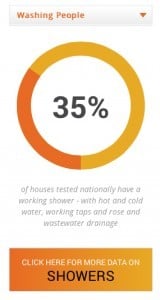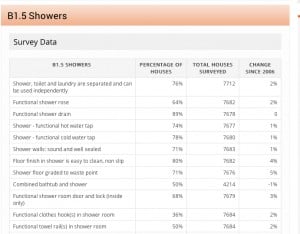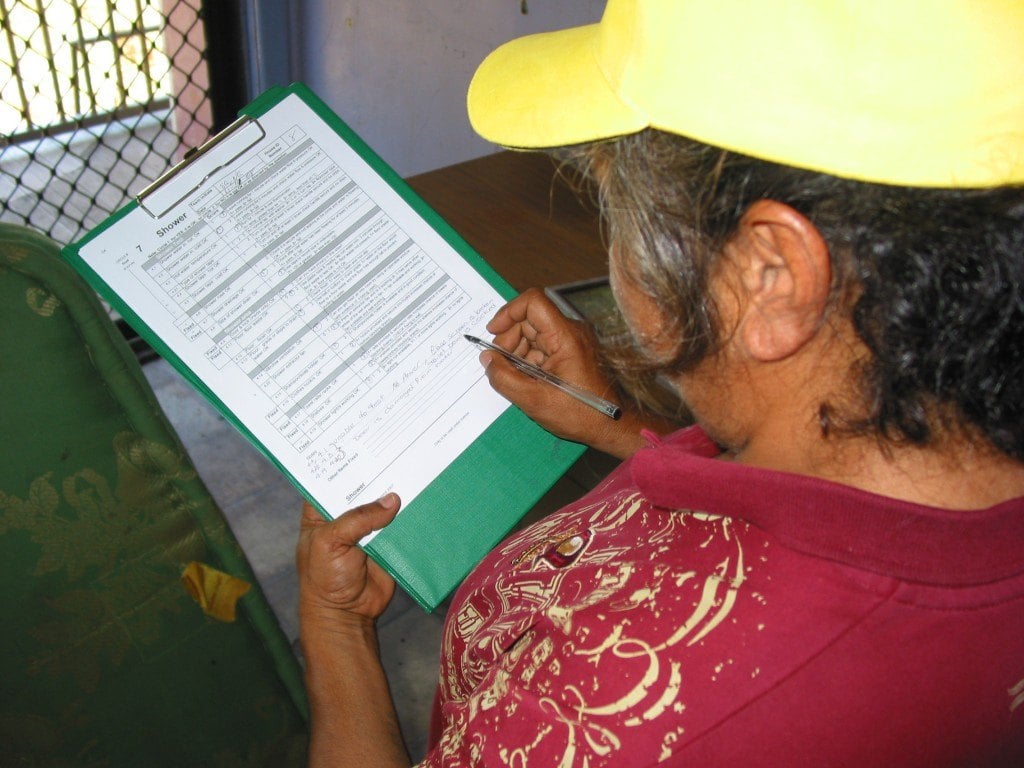Housing for Health – the guide is evidence based – it uses data from houses around Australia to define the problems that stop houses functioning and then uses that information to improve the houses.
A snapshot of summary data heads each item in the Guide:

The More Data link will give more detailed data to inform designers about housing function and failures. The detailed data gives the denominator (house numbers) for each item, the current performance result and the improvement (or decline) in performance since 2006 to indicate whether progress is being made.

The data throughout the Guide comes from over 190 Housing for Health projects that have tested over 280 items in more than 7,500 houses – over 2.1 million items of data. The testing is done before fix work commences and then again after the project is finished. The rigorous, standardised testing ensures that not only has any money been spent well, but that house function has been improved.

The testing is done by local community teams trained and supported by Housing for Health staff. The work on every project is audited by Healthabitat to ensure data quality and project performance. Over 75% of all staff nationally have been local Indigenous community people. Housing for Health – the guide represents the local housing story of over 50,000 Indigenous Australians.
Currently, at the end of the 190+ projects, over 4.2 million data items have been collected and used to improve housing.
The first use of the data is within 24 hours of a project starting when the data collected is processed on site, using custom designed software, and directs tradespeople to fix houses immediately.
Over the next year the data is used again and again to prioritise and complete repair works within each project.
Consolidated data, as appears in the Guide, is then used to:
- show trends is house failure and improvement over time
- discuss housing issues at the house, community, state and national levels
- define design research to improve products and construction practices
- dispel myths about the causes of house failure
- better target limited maintenance resources to items critical to safety and health
- discuss with industry and manufacturers product performance and improvement
- better inform design and health professionals about the links between housing and health with data
- inform housing managers about the reasons for house failure and ways to direct essential safety and health maintenance based on data
- inform all levels of government housing policy and approaches to housing maintenance and management aimed at improving health.
As well as the above Housing for Health project data, additional data from applied research and development projects carried out over 15 years also inform the Guide. Areas include lighting, hot water systems, wastewater systems, tap ware, stoves, kitchens, temperature control, yard development works and data management systems.
BRIEF VIDEOS ABOUT THE DATA
Tim Sowerbutts – the statistician behind Housing for Health from Simon J Forbes on Vimeo.
Speaking about “barely believable data” and needing to get the data right at the source.
Doogety Christine Campbell – Data manager from Simon J Forbes on Vimeo.
Speaking on the survey-fix process and how it leads to immediate fix work
